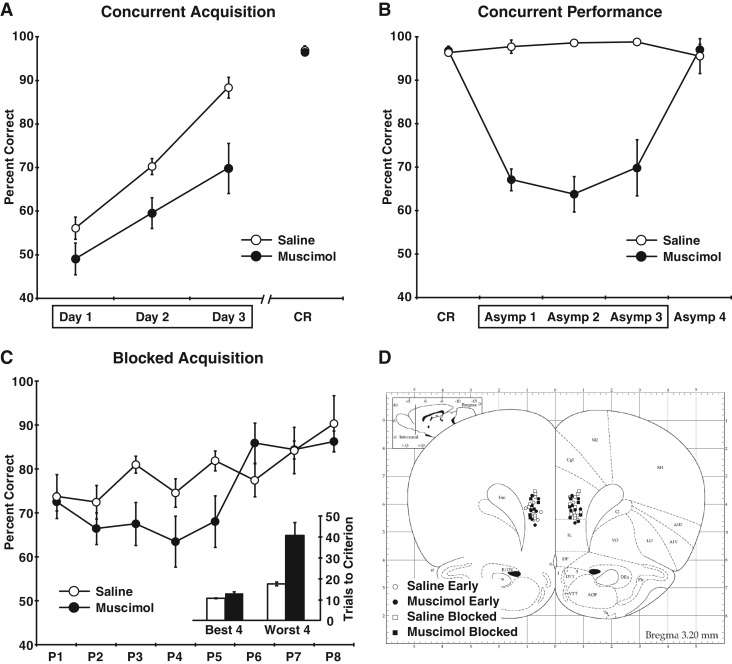Figure 1.
Experiment 1: Inactivation of the mPFC during concurrent and blocked odor discrimination. (A) The percentage of trials with a correct response during the concurrent acquisition of eight odor discrimination problems is shown for saline and muscimol rats. Infusions were given prior to each of the first three training sessions (indicated by the box around days 1–3). By the time the rats reached the behavioral criterion (CR session), the muscimol rats had caught up to the performance level of the controls. (B) The effects of muscimol on asymptotic performance of the concurrent discrimination task are shown. Infusions were given prior to the first 3 d of post-criterial asymptotic performance (Asymp 1–3). Data of the criterial session (CR) and fourth session, which did not involve infusions, are also shown for comparison. Error bars are not visible for some values because the SEM was smaller than the area covered by the data markers. (C) The percentage of trials with a correct response over the course of training to the criterion on each of the eight odor discrimination problems (P1–P8) is shown for the blocked training procedure. The average number of trials needed to reach the criterion for the best and worst problems for each rat is shown in the inset. For this experiment, the rats were given saline control infusions or muscimol infusions prior to each training session. (D) Cannula placements are shown for the rats in Experiment 1, including the concurrent training condition (saline early and muscimol early) and the blocked training condition (saline blocked and muscimol blocked). (Atlas plates were adapted from Fig. 8 in Paxinos and Watson 1998, with permission from Elsevier © 1998.)

